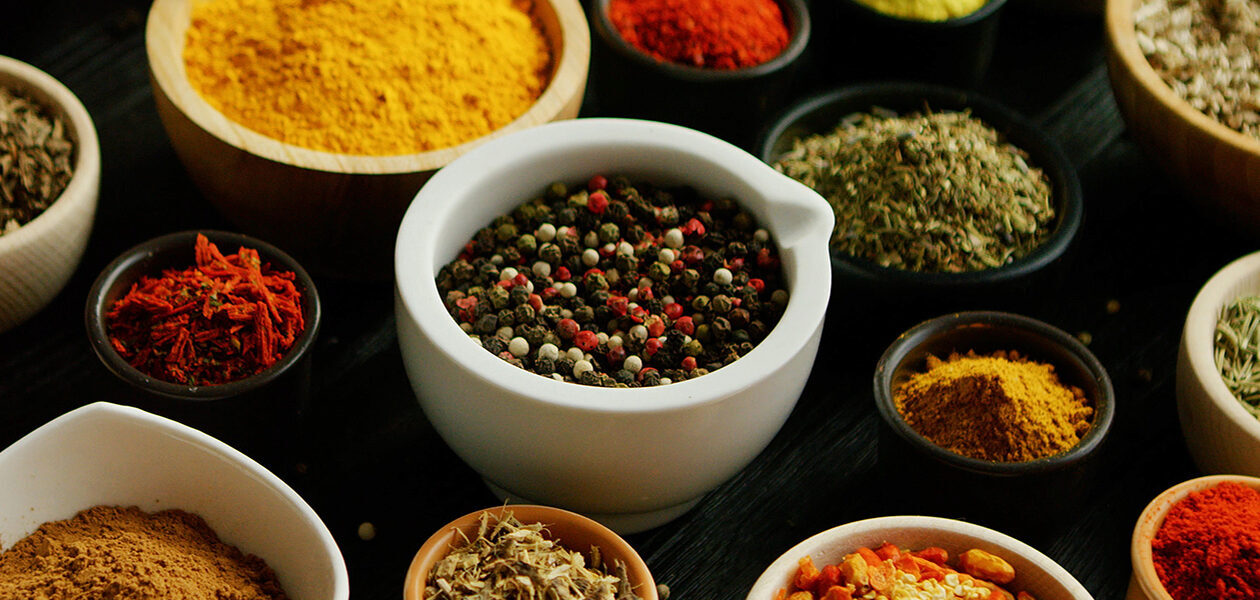Follow these guidelines and you’ll be on your way to creating the ideal balance of seasonings in all your favourite dishes.
The more you lift weights, the stronger your muscles get, right? Well, the same goes for your taste buds — the more they taste, the better they become at judging whether a dish is well-seasoned. It’s not just a matter of adding salt and pepper, either. Great flavour is all about getting the right combination of spices, herbs and aromatics in the mix. Here are our five top tips for hitting the sweet spot between overly mild and overpowering.
Rule #1: Taste as you go. It’s a bummer when a finished dish is bland, and it’s harder to correct at the end of cooking. The solution: Dip a spoon into the pot and taste early and often. When you try a recipe at various points during cooking, you’ll learn how the flavours of ingredients change and how to adjust different elements so the seasoning is just right. For example, trying a spoonful of a braising liquid, like the one for Rosemary & Tomato Braised Short Ribs, as it simmers can help you make minor tweaks, like a pinch more salt or a sprinkle of chopped fresh herbs, that yield major flavour payoffs. Rich, creamy dishes like Asparagus & Spring Gouda Risotto sometimes require a lot of tasting near the end of cooking, but it’s delicious work!
Rule #2: Stick to a theme. Certain flavours belong together. Think of basil, Parmesan and balsamic vinegar in Italian cooking, or ginger, soy sauce and miso in Japanese dishes. Pair ingredients that are part of winning flavour combinations, like the fish sauce, coconut milk, chili and cilantro in Thai-Style Coconut and Meatball Soup ; or the cinnamon, cayenne pepper, chocolate and vanilla in Spicy Mexican Peanut Brownies. If blending flavours seems a bit overwhelming, or you need a quick fix for a weeknight dinner, try a prepared spice blend, like our Sensations by Compliments Seasoning Grinders, to remove the guesswork. But don’t be afraid to go for it and try an untested combo once in a while — that’s how exciting new dishes are created.
Rule #3: Build layers of flavour. When a dish tastes great, there isn’t just a single flavour at work. The right mix of ingredients creates a complex harmony of tastes. Savoury aromatics, such as garlic, onions, leeks, celery and carrots, and herbs, such as bay leaves, parsley and thyme, are the foundations of great flavour. They mellow as they cook, so their notes aren’t sharp and pronounced, but without them, the overall taste of a dish falls flat. A great example is the layers of caramelized onion, fresh thyme and red wine that give our Brie Onion Soup its deep, rich savouriness. Think you can’t pack a lot of pizzazz into a bite-size morsel? Try Smoked Salmon, Capers & Arugula Flatbread — the yummy mix of honey mustard, fresh dill and green onions guarantees it will disappear.
Rule #4: Pair contrasting elements. The five basic tastes are sweet, sour, salty, bitter and umami, and in cooking — as in life — opposites often attract. Slow Cooker Sweet & Sour Meatballs is a classic example, with pineapple, sugar and ketchup creating a lip-smacking sauce. Sweet ingredients complement bitter ones; in our Creamy Kale, Romaine & Apple Salad with Spiced Nuts, the sweet honey and apple soften the natural bitterness of the kale and romaine. Meanwhile, sour citrus juice adds brightness to dishes and cuts through richness. Try adding a squeeze of lemon juice to a cream sauce just before serving, or ladling up our Lentil Soup with Chorizo & Kale , which is balanced by a splash of orange juice. For a big hit of flavour, garnish dishes with the same fresh herbs you’ve used to cook them, such as chopped fresh cilantro on a chili con carne.
Rule #5: Salt, taste and repeat if necessary. Salt makes food taste yummy, but some recipes leave the exact amount up to the cook’s palate. While adding salt in several stages is ideal, don’t despair if you forget to do it until the end. (Meat is an exception, as are starchy ingredients, such as pasta, potatoes and legumes, which benefit from cooking in salted water.) However, ease up on added sodium if a recipe calls for salty ingredients like bacon, olives, cheese or clams. Fish sauce, a Thai condiment, adds this dimension to Chicken Pho with Spinach , while capers and anchovies do the same for Sicilian-Style Sautéed Cauliflower. And remember that temperature affects your perception of saltiness: Cold dishes are more flavourful when they are more highly seasoned. Let taste be your guide.

